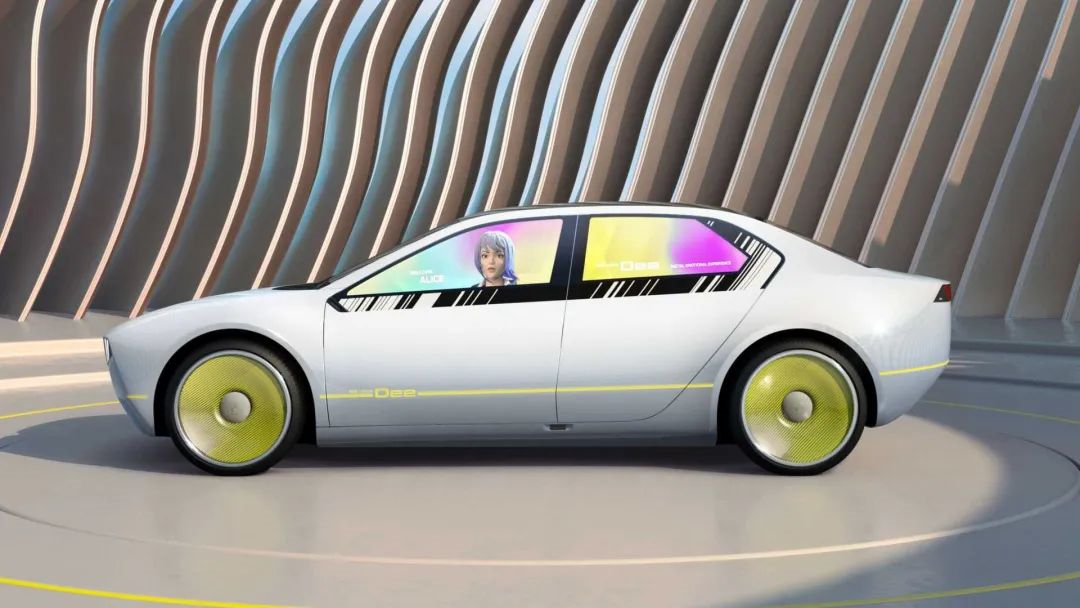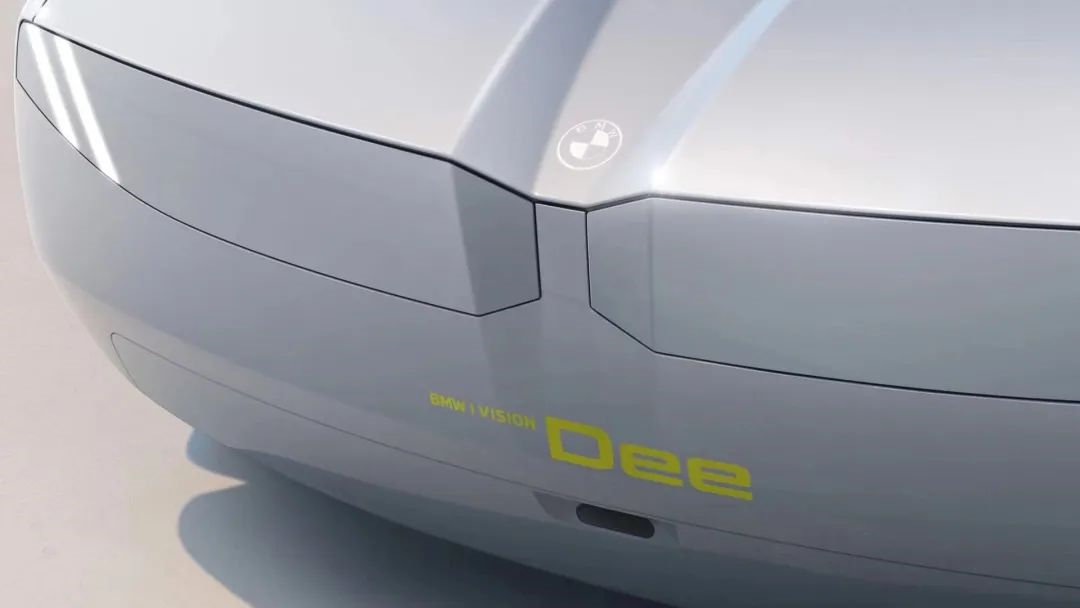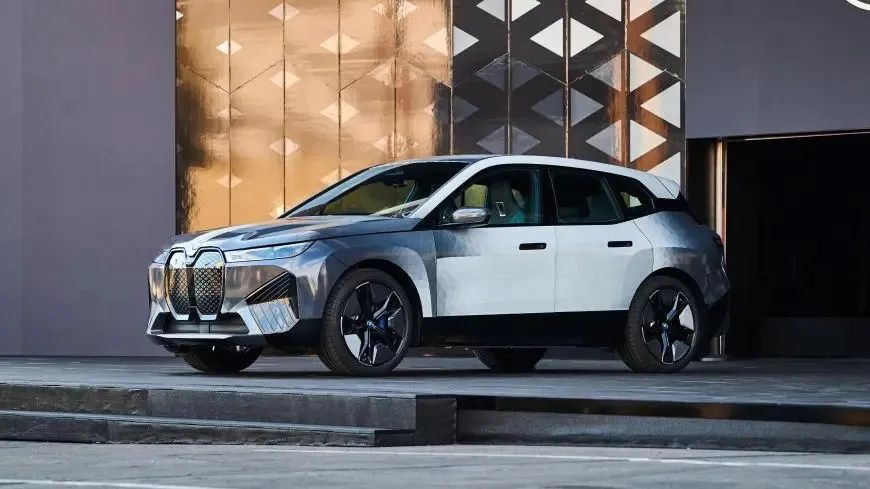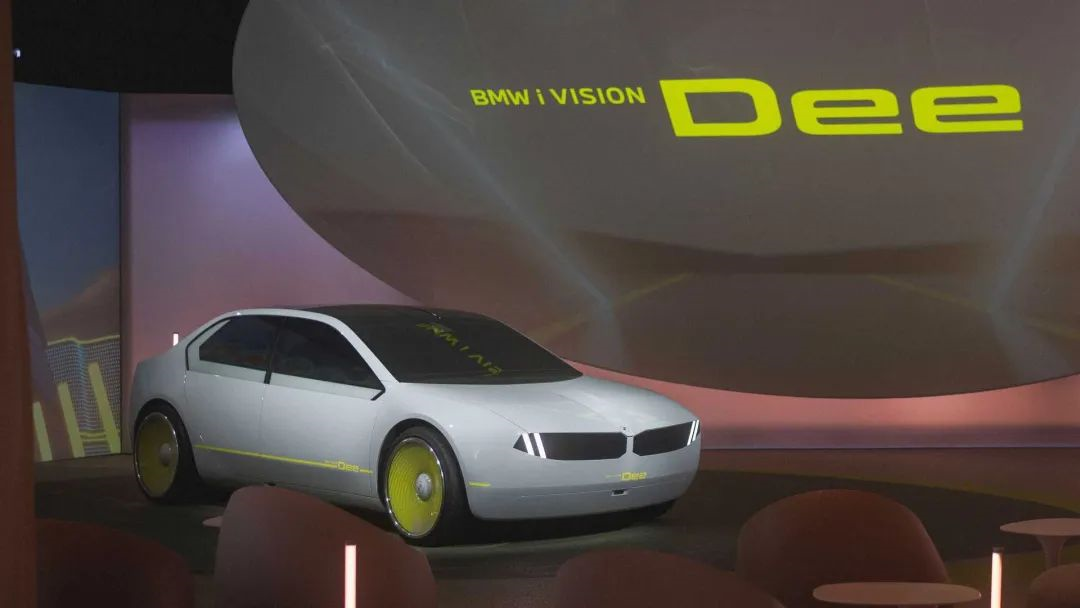Author: Knight of the Waves
If a car had the ability to express joy, anger, grief and happiness, would you be surprised and scared?
At the recent 2023 International Consumer Electronics Show (CES), BMW did not simply bring us a fresh technology experience. Instead, for the first time, the brand used an entire vehicle to convey its understanding and definition of new-generation car design and future travel methods.
The new car, officially named “BMW i Vision Dee,” the abbreviation “Dee” comes from “Digital Emotional Experience,” which means digital emotional experience. In plain language, intelligence is the coolest part of this car.

The design of the new car is both avant-garde and retro, with a square front and straight-line side that seems to evoke the feeling of a BMW sedan from the 1980s. However, it should be noted that one should not be misled by the hidden retro feel of i Vision Dee, as this is a brand new design language for BMW for the year 2025.

Of course, classic design elements such as the double kidney grille and Hofmeister kink will still be retained, but in a new interpretation. The lemon-yellow enclosed wheel hub is also quite funny.


Next comes BMW’s moment of showmanship. As the world’s first car to use full-color E Ink technology, the i Vision Dee is covered in electronic paper, displaying up to 32 colors through different electronic pulses.

Compared to the black-and-white alternating effect created by BMW on the iX Flow, E Ink technology has clearly been further upgraded.

Since it is labeled with “emotional interaction”, i Vision Dee also needs to have some “seven emotions and six desires”. The vehicle’s enclosed grille and headlights will form a human-machine emotional interaction module together, which can not only make different “facial” expressions to express different emotions such as joy, surprise, or approval, but also recognize the identity and position of people through sensors outside the vehicle. When the vehicle detects that the driver is approaching the cockpit, the door will automatically open to welcome them.


On the iX, BMW applied the Shy Tech concept, and on the i Vision Dee, this concept will be further expanded. Thanks to the advanced heads-up display system (HUD) adopted by the new vehicle, all information of the vehicle can be projected on the entire windshield, so that while canceling the traditional instrument panel and central control screen, it can still retain and display all the contents that the driver needs to perceive in an all-rounded way, achieving true minimalism while not affecting human-machine interaction.
 No matter it’s the basic data of the vehicle or the entertainment system, or other interfaces for entertainment, or even accessing the metaverse, the windshield will be the only digital interface for interaction with the public. While other carmakers are still competing in the era of big screens and multiple screens, BMW has actually started to explore the technology of screenless era. As BMW said at CES, this will be the re-evolution of the HUD system. By 2025, BMW’s new generation of vehicles will all use this advanced heads-up display system.
No matter it’s the basic data of the vehicle or the entertainment system, or other interfaces for entertainment, or even accessing the metaverse, the windshield will be the only digital interface for interaction with the public. While other carmakers are still competing in the era of big screens and multiple screens, BMW has actually started to explore the technology of screenless era. As BMW said at CES, this will be the re-evolution of the HUD system. By 2025, BMW’s new generation of vehicles will all use this advanced heads-up display system.


Even in the i Vision Dee, there will be no physical buttons in the car. Drivers can decide for themselves the digital content displayed on the heads-up display system and the level of detail through the five virtual buttons projected on the center console and the Shy Tech sensors hidden on the dashboard. Optional information includes five levels: real environment, driving information, social communication, augmented reality projection, and the virtual world. As the level increases, the projected information area on the windshield will also increase until it finally “fills the entire screen”.

For example, in the first level, only the lower one-third of the windshield is needed to display basic driving information; in the third level, more area is used to display social platform information and AR assisted navigation content; in the highest fifth level, the L4&L5 level of assisted driving will be displayed in full screen and enter the “metaverse”.
 It’s worth mentioning that in the fifth level, the vehicle will be in a fully autonomous driving state, and passengers can access the virtual world through the interactive interface on the front windshield, whether it’s watching movies, playing games, or selecting clothing, hairstyles, and shopping in the virtual world. What’s even more exaggerated is that entering the virtual world no longer requires any auxiliary media (such as VR glasses), and all interactions will be achieved at zero distance.
It’s worth mentioning that in the fifth level, the vehicle will be in a fully autonomous driving state, and passengers can access the virtual world through the interactive interface on the front windshield, whether it’s watching movies, playing games, or selecting clothing, hairstyles, and shopping in the virtual world. What’s even more exaggerated is that entering the virtual world no longer requires any auxiliary media (such as VR glasses), and all interactions will be achieved at zero distance.

I don’t know if you were dazzled by BMW’s dazzling new technology, but in fact, BMW is not adding, but subtracting. Simplification is the main theme of this release event. Perhaps these technologies do not yet have the conditions for large-scale application, but looking back at the development trend of the automobile industry over the past 100 years, which advanced technology and concept has been accepted instantly after coming into being?

Perhaps by 2025, sportiness and handling will no longer be the highest medals that BMW pursues, but the concept of human-vehicle integration will certainly not be lost. BMW has already demonstrated its brand-new ideas on future automobiles with the i Vision Dee concept car. From this, we can also imagine that more and more car companies will start to plan how to pave their way to the future. It’s also worth imagining, if you were an executive in an automotive brand, what kind of car would you design for the future?
This article is a translation by ChatGPT of a Chinese report from 42HOW. If you have any questions about it, please email bd@42how.com.
